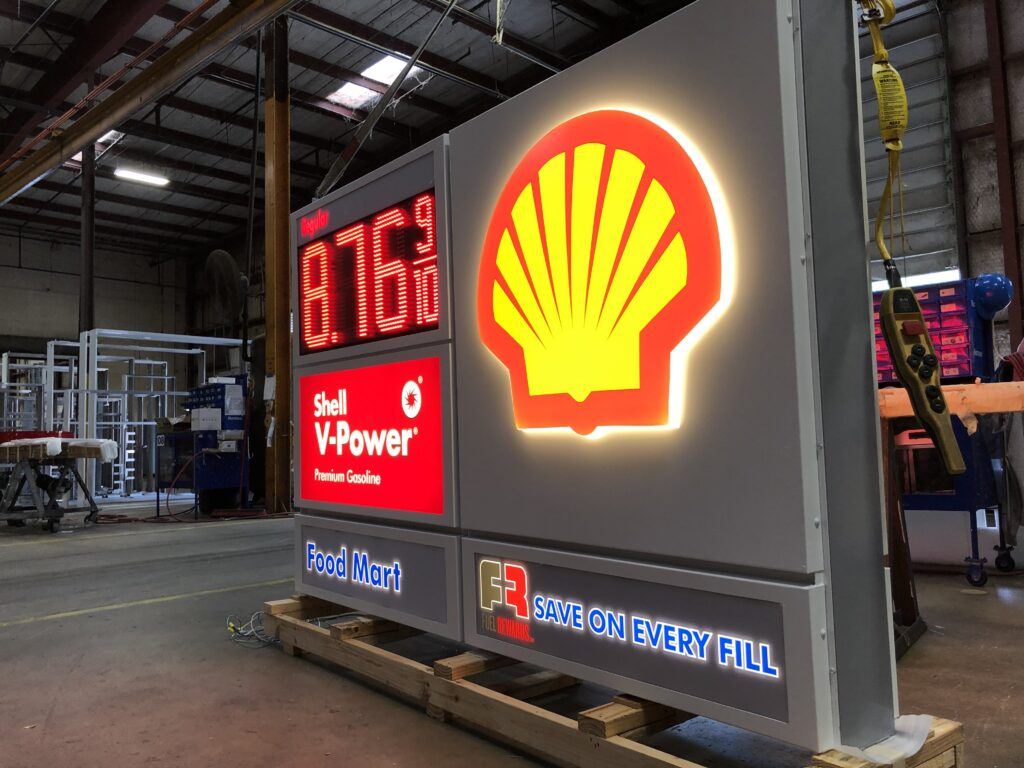
What is Thermoforming?
We see signs all around us, every day. Have you ever wondered how they’re made? One process commonly used by sign companies is called thermoforming.
“Thermoforming is a manufacturing process where a plastic sheet is heated to a pliable forming temperature, formed to a specific shape in a mold, and trimmed to create a usable product. The sheet, or “film” when referring to thinner gauges and certain material types, is heated in an oven to a high enough temperature that permits it to be stretched into or onto a mold and cooled to a finished shape. Its simplified version is vacuum forming.” (Resource: Wikipedia)
There are different types of gauge (sheet thickness) used in this process, thin-gauge or heavy-gauge, depending on the end-user’s requirements. To make the sign, heat and pressure are used to compress sheet plastic into a prepared mold, creating a sign with raised characters and other decorative elements. Molds for standard signs can be used many times, such as when signs are required for a business with multiple locations.
At Federal Heath, our in-house thermoforming capabilities are centrally located in the United States out of our Jacksonville, Texas, manufacturing facility. With 150,000 square feet of manufacturing space, state-of-the-art equipment, and highly skilled tradespeople we are equipped to handle any size project. with quality that brands have come to trust since 1901.
This video shows the process in action as we create some Phillips 66 sign faces. Other companies that we use the thermoforming process for include – Shell, Lidl, Burger King, and Sonic to name a few.
